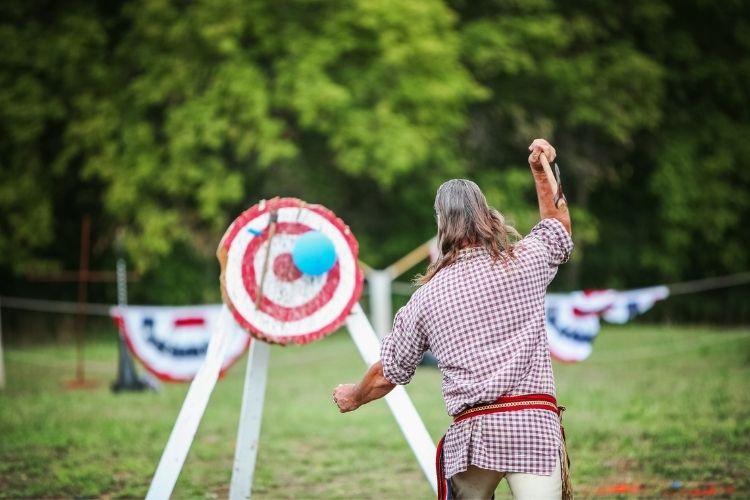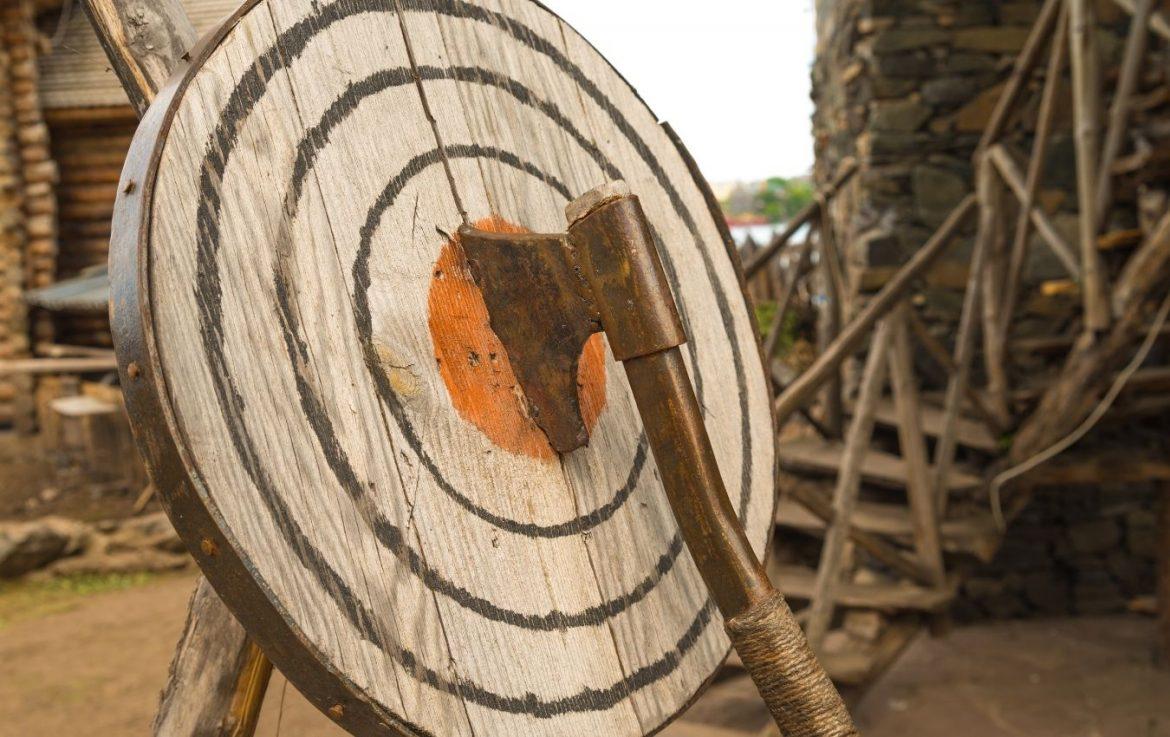Table of Contents
Axe throwing—it’s not just an impromptu way to display dominance at backyard gatherings or a quirky date idea. No, my friends, it’s a craft, honed by the determined and brave, very much like swinging a hammer but with flair. Whether you fancy yourself as Thor wielding Mjolnir or simply seek an excuse to hurl sharp objects legally, here’s your blueprint to striking that coveted bullseye.
Understanding Your Weapon
First things first—a deep dive into your arsenal. The type of axe matters; from hefty felling axes made for splitting firewood to lighter tomahawks and hatchets designed for precision throws. Here’s the breakdown:
– Throwing Axe: Ideal for beginners with its balanced weight and easy grip.
– Big Axe: Think of these as the soccer ball in our game—bigger target, harder to master but oh-so satisfying when you nail it.
– Tomahawk/Hatchet: The dart of axe throwing—sleek, nimble, and perfect for detailed stencil challenges at any venue.
Regardless of your selection—one rule reigns supreme—a sharper axe is synonymous with success. That very sharp blade ensures less bounce off the target area and more awe-inspiring thuds as metal meets wood in perfect harmony.
Grip & Stance: Holding Power
How you hold that axe—the positioning of your dominant hand on the axe handle—and how you stand are critical:
1. Grip: Channel your inner craftsman handling a delicate piece fashioned on upright timber—not too tight yet full control ensuring maximum rotation without overdoing the spin.
2. Stance: Different stances cater to personal comfort but remember basics; foot aligned with shoulder width (like setting up a free kick), opposite foot forward if needed (half step adjustments work wonders) creating an arc delivering formidable forward motion.
Technique Over Brute Strength

The Wrong Way vs The Right Distance
Chuck away notions equating strength with distance or accuracy:
1. Eye-level release ensures engineered trajectory sending that sharpened edge flying straight toward its intended mark instead of theatrically spiraling without purpose—the advanced thrower understands minimizing much spin is key here.
2. Correct gauging—from which point to unleash varies; adjusting positions slightly backward or forwards tweaks both aim and amplitude beneficially enriching muscle memory akin to practicing drills with a soccer ball.
Rotation Mastery
A consistent rotation determines whether you’re crowning glory atop leaderboards within any respectable watl venue murmuring approvingly amidst each thrown hatchet:
1. Assurance in every throw stems partly from meticulous attention paid toward aligning axe head during practice runs—a small tilt either direction profoundly impacts projectile arc resembling precise pendulum movements rather than awkward lobes spotted during amateur hour.
2. Visualizing desired outcome—whether sticking inch-perfect near defined bullseyes or gracefully embedding within nearby scoring sectors necessitates employing minimal wrist action supporting gentle rotations supplemented via shoulder pivot alluding seamless dexterity admired across hawk enthusiast circles.
Advanced Techniques for the Ambitious Thrower
Once you’ve mastered the basics—steady grip, measured stance, and clean rotation—it’s time to elevate your game. Advanced techniques can transition a novice thrower into an axe-wielding maestro, synonymous with shifting from single taps on a soccer ball to executing intricate dribbles around defenders.
Upping the Ante: Distance Adjustments
Just as in adjusting for a long pass or a short chip in soccer, axe throwing demands precision in how you gauge distances.
– A half step forward or backward could be all that separates your throw from striking its intended target area—or missing it altogether.
– Experimenting with different axes might also prove beneficial; sometimes a lighter tomahawk allows for greater control over distance than a cumbersome big axe.
Perfecting The Bullseye Hit
The ultimate goal of any aspiring champion is consistently hitting the bullseye. This feat becomes attainable through understanding and mastering two aspects:
1. Rotation Control: Mastering the exact number of rotations needed for your throwing style ensures the sharp edge meets its mark squarely each time.
2. Throwing Dynamics: Incorporating minute adjustments such as slightly changing grip pressure mid-throw or varying release points based on feedback from prior attempts helps refine aiming precision exponentially.
Embracing Variety: Different Axes and Targets
As one progresses, exploring varied types of axes—beyond just the standard hatchet—can inject new life and challenge into practice sessions:
– Double Bit Axe: Though rarely used competitively due to safety concerns, practicing with one (carefully) can improve balance and ambidexterity.
– Fireman’s Axe: With its unique shape and weight distribution, it offers an alternative feel but requires adjustment in technique.
Additionally, diversifying target setups—from traditional circles to creative stencils mimicking real-life scenarios or abstract patterns—boasts not only an artful approach but hones adaptability amongst avid throwers keen on showcasing artistic flair alongside skill prowess.
Integrating Into Wider Culture: Competitive Leagues & Social Gatherings
Axe throwing isn’t merely about personal achievement; it’s deeply entrenched within social fabrics melding competitive spirit with camaraderie akin to team sports like soccer:
1. Participating in leagues provides structured competition against peers where rankings fuel motivation amidst shared experiences distilled during post-match gatherings.
2. Hosting thematic events ranging across spectrum—from medieval tourneys urging attire matching periods when axes were warfare staples; introducing modern twists converting targets resembling popular icons or goals—to fosters community engagement promoting inclusivity beyond mere enthusiasts nurturing spaces where beginners are welcome forging friendships spanning diverse backgrounds intrinsically united by collective zeal towards honed craftsmanship.
Cultivating Mastery Beyond Technique
True mastery transcends technique; imbibed within relentless pursuit lies passion interwoven with resilience reflective across varied ventures whether taking decisive shots toward soccer nets or releasing thrown hatchets slicing through air finalizing their descent neatly into wooden palettes etched deeply calling forth next sequences eager explorations embarked upon.
Remember—the path ahead teems not solely challenges acknowledged triumphs awaiting unveiling paralleled dedication ensuring continuous evolution beckoning further boundaries pushed enrichingly captivating journeys undeterred enthusiasm burning brightly leading onwards.

